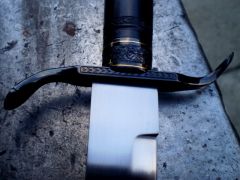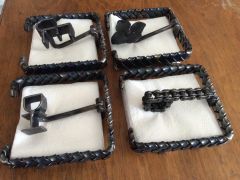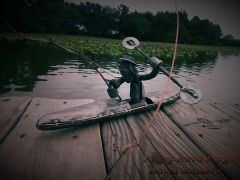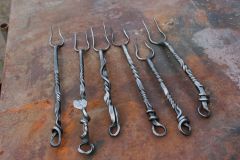-
Posts
204 -
Joined
-
Last visited
Content Type
Profiles
Forums
Articles
Gallery
Downloads
Events
Everything posted by HIGHSIDER
-
Very clever. I like that..
-
Good job..(thumbs up!)
-
Love the simplicity of those pieces. Very innovative, great job.
-
Continued thoughts & prayers.. Get well soon John.
-
-
You've very welcome matto, I'm glad you've taken my advice in good spirit and it looks like your well on top of things. Good job that. I'm from county Meath on the east side of Ireland. A little village called Bóthar Mín, which means in english smooth road which was one of the 5 smooth roads that lead to the Hill of Tara. Quite a history to the place. You are invited now, If you're ever thinking of taking the trip across the sea, do drop me a line and there'll be a cead mile failte or 'a hundred thousand welcomes' and you'll really enjoy the place.
-
Have to say and all joking aside, very well done on that build to all concerned. The best of luck with you're new workspace Matto. It's a real neat building. I have something on my mind when I look at you're work to date and I don't want to put a negative on this project but I'll say it and hope you don't mind me saying this but be very careful with your forging. There's a lot of timber gone into that build. Please be very careful how you conduct that forge and everything associated with spark generation and such. I've burnt my shop down some years back and I'm still repairing it. One bit of carelessness on my behalf with a grinder and I paid dearly for it. I regret not paying more attention but that's in hindsight now. I hope you don't mind me saying that....just be careful.
-
Oh that's beautiful. Love the symmetry & the fold at the leaf stem....very nice indeed.
-
-

Hydraulic project,how does a numpty calculate requirements??
HIGHSIDER replied to David Edgar's topic in Presses
You're very welcome David, I'm glad you've found my input helpful. If you're ever over on my island, do drop by for those drinks. I'll have the kettle boiling. -
- 1 comment
-
- Kayak
- kayakfishing
-
(and 1 more)
Tagged with:
-

Hydraulic project,how does a numpty calculate requirements??
HIGHSIDER replied to David Edgar's topic in Presses
Hi David, Rather than say reverse the formula we just reconfigure it. Let’s run over it again… Force is equal to Pressure multiplied by Area or F = P[A] Now reconfigure the formula to get Pressure or [P] Where Pressure is Force divided by Area or P = F/A Now reconfigure the formula to get A or [A] Where Force is divided by Pressure or A = F/P Now let’s put this into practice and work with your system and see what turns up. First off, let’s define what exactly is being asked in the question. Okay, we’re looking for a Force. You want to find out what force is being generated in your press. Straight away we are going to use: F = P[A] The first formula listed above, the remaining two as said are manipulations of this one. So, let’s list out what we have and have not; F =? (We don’t have F and will now calculate this) P = 1250 psi which is 86 Bar which is 8,600,000 Pa (86 x 10^5 Pa) or 8.6MPa (M for Mega (10^6)) [To get Bar divide psi by 14.5] A = 125mm (again, we must change mm to m (standard notation) so 125mm is .125m) Area:- Formula for cylinders = (π.d^2)/4 where d = .125m (π.(.125^2))/4 = .012271846 m^2 In summary F = ? P = 86 x 10^5 Pa A = .012271846 m^2 Again: F = P[A] So F = (86 x 10^5) x (.012271846) F = 105537.87N (divide this by 9.81 to bring N’s to kg) 105537.87/9.81 = 10758.19kg (and finally divide 10758kg by 1000 to bring kg’s to Ton’s) 10758.19/1000 = 10.7Ton’s. Almost 11Ton. So in summary; your press operating at 1250psi, using a cylinder with a 125mm barrel bore will generate a Force of 10.7Tons. ~~~~~~~~~~~~~~~~~~~~~~~~~~~~~~~~~~~~~~~~~~~~~~~~~~~~~~~~~~~~~~~~~~~~~~~~~ Now let’s look at the rod end and work out what’s the returning force on that cylinder seeing you supplied the rod diameter (60mm). Now have a think about this, the barrel end is always going to generate the largest force for a cylinder because of the surface area available for the hydraulic oil. The rod end of the barrel will not have the same surface area and the force generated will be less. Where you have a reduced surface area, you will have a reduction in force, allow me to demonstrate; The barrel end diameter of your cylinder: 125mm (or .125m) The rod diameter of your cylinder: 60mm (or .06m) We use a slightly different formula for the area calculation for a rod end of a cylinder A = (π. [D – d] ^2)/4, Where D = Barrel end Diameter of cylinder Where d = rod diameter of cylinder D = .125 d = .06 A = (π. [.125 – .06] ^2)/4, A = .003318307m^2 So let’s pop that into the formula and see what the rod end force of the cylinder is:- F = P[A] F =? (We don’t have F and will now calculate this) P = 86 x 10^5 Pa A = .003318307m^2 F = (86 x 10^5) x (.003318307) F =28537.44N or 2909.01kg or 2.9Ton (say 3Ton nice round figure) So, in summary Your press is generating 10.7Ton when your power pack is supplying 1250psi and using a 125mm cylinder. Also the return or rod end force is 3Ton while using the same pressure, (1250psi) where the rod diameter is 60mm with the main barrel dia again 125mm In the words of the late great Fred Dibnah….did yer like that?? lol Take your time and run through the above figures and have a go with a calculator. Nothing numpty about the questions you have asked but it does help if you get a little practice in with the math’s where it can be a big help understanding a hydraulic system. Good luck. -

Hydraulic project,how does a numpty calculate requirements??
HIGHSIDER replied to David Edgar's topic in Presses
You're both very welcome gentlemen. It is my pleasure. I enjoyed putting that post together. Hydraulics is a very interesting topic. It's always a very worth while exercise to sit down with a note pad & calculator and work out the forces exerted by a hydraulic system if you know the operating pressure of a power pack and the diameters of the associated cylinders. Likewise it is also very beneficial to spec out; Cylinder Dia & Pressure values, by rearranging the formula:- F = P [A] or P =F/A or A = F/P -

Hydraulic project,how does a numpty calculate requirements??
HIGHSIDER replied to David Edgar's topic in Presses
I would like to help here and give my opinion that I believe will assist with a few guide lines. First off I’m putting on the kettle and putting on some tea as this is going take a little setting up to get my point over. Ah that’s better, oh that’s nice, I also found a bici.. lol. Our friends across the Atlantic are going to love this as its all in metric….sorry guys! Let’s get a little background set up for the force calculations. Force is equal to Pressure times Area or **F = P [A] Where F is measured in Newton’s (N) Where P is measured in Pascal’s (Pa) Where A is measured in m^2 and uses [(π.d^2)/4] for cylinder calculations Now let’s try and make a bit of sense of the above Take your 1Ton load. Well we’ve got to change that into standard notation where 1Ton = 1,000kg. Now we’ve got to use that science in the air called gravity and change the 1,000kg into N’s. To do this we call in another multiplying factor called g or gravity or 9.81m/s^2. We just simply multiply the two of these to get the force valve required for the above formula ** 1,000kg x 9.81m/s^2 = 9810N. Next factor required in the formula is P where we need to work out the Pascal value. To do this we’ll take the more familiar term used in hydraulics and convert Bar pressure to Pascal’s. 1 Bar = 100,000 Pascal’s or 1 x 10^5 Pa Let’s look at a pressure on a power pack and use a realistic figure, say 200Bar pressure which I would say is a fair assumption where most mid range power packs can achieve this pressure. We have to take a figure so we’ll go with 200Bar for now. So.. 200 Bar = 200,000,00Pa or 20 MPa. That’s the pressure sorted, Now lets look at what cylinder we need and to do this we will look at [(π.d^2)/4] where d in this formula represents the diameter of the cylinder. Now let’s start some number crunching and to do this lets list what we’ve got and take it in stages. We have:- F = 9810N P = 20MPa (or 20 x 10^6) A = we don’t have d (dia of cylinder) so now we can calculate. First off we need to reconfigure the formula so we can compute the value of d. F = P [(π.d^2)/4] 4[F] = P [(π.d^2)] (4[F])/P[π] = d^2 √ {4[F])/P[π]} = d (or turn this around) d = √ {4[F])/P[π]} Let’s fill out what we have... d = √ {4[9810])/20 x 10^6[π]} d = .024m or 24mm (or lets round this off, no cylinder manufacturer will make you a cylinder with a 24mm barrel diameter so the nearest standard will be 25mm diameter) So in summary, you will need a cylinder of 25mm diameter (barrel end) operating at 200Bar pressure that will move a load of 1Ton for the project listed above. Altering the pressure value will alter the d value. Put in a pressure of 100Bar (10 x 10^6) and see what d value you get? Now I’ve had a bit of fun putting that together but lets bring this study into a realistic situation. It’s very unlikely that you’re going to go out and buy a cylinder of 25mm Dia. That’s not likely to happen. You will probably end up going for a cylinder that has a decent body (say 80 or 100mm barrel diameter) that would generate a lot more force and do more work with a good power source say we use 200Bar again. So, let’s see what force is generated by using 200Bar pressure and using a cylinder with a 100mm barrel diameter. So again.. F = P [A] F = (unknown, we’re going to calculate this) P = 20MPa (or 20 x 10^6) A = [(π. (.1) ^2)/4] where .1 is 100mm converted to m) dia of cyl F = 20 x 10^6 [(π. (.1) ^2)/4] F = 157079.63N or 16012.19kg or 16Ton force (divide 157079.63 by 9.81 to get kg) So, again in summary, a 100mm dia cylinder will give you 16Ton force using a power pack at 200Bar pressure. That’s more like it, more scope in the tonnage that can do more variety of work. Two figures I like to use on a press is the pressure that the power pack is delivering (200Bar in the above study) and the diameter of the cylinder used. Again in this case, 100mm Dia. Straight away I know by the above calculations, I’m getting 16T of force available at the press. Use a pressure gauge fitted to the system or a hydraulic hose and note the pressure before the crack off point on the relief valve so you know the force available at the press. If you alter the pressure, you automatically alter the force. It takes a little getting used too but if you use the above calculations, it will calculate what force is being generated by what pressure is available and what cylinder you are using. The strokes per/minute is one of those questions that can be answered by a good hydraulic part supplier. It’s one of these set ups that can be achieved by using limit switches relayed back to solenoid/spool valves. It’s not that difficult to set up. The flow rate of a power pack along with the hydraulic power it can deliver is key information here. I hope this has helped…..time for another brew of tea!! -
Thoughts with family & friends. I'm sorry for your loss. May he rest in peace.
-
Well done that man, excellent build. Mind the fingers while you get used to it, then again, always mind the fingers.
-

forging for steam locomotive restoration
HIGHSIDER replied to gearhartironwerks's topic in Member Projects
Mighty work there fella's.. Miss DeMoor sure is a fine looking hammer... -
"""Depends what your final application is, torque requirement etc, pulleys the simplest,reduction gearbox probably the best,I always thought a VFD would only work as a speed reducer on a 3 phase motor???""" Agree with this, the torque requirement is key here.
-
Oh that's beautiful....one of a kind that.. Very well done fella
-
-

Principles of Estimating
HIGHSIDER replied to rockstar.esq's topic in The Business Side of Blacksmithing
Top class advice, many thanks for sharing & the effort made here. -

H/V bandsaw question, well, THERE'S your problem
HIGHSIDER replied to Geoff Keyes's topic in Saws, bandsaws, hack saws, etc
Should be able to get a pullers around that gear...make sure there are no hidden grub screws that may catch you out. Easy does it and you should have it off with little trouble. -

Game of Thrones (scrap metal homage)
HIGHSIDER replied to scrapartoz's topic in Metal Sculpture & Carvings
Oh boy, I'd love that in my kitchen... Eating cereal would never be the same lol Again mighty work there scrapartoz, great imagination. -
Oh I like this guy's sense of humour. I did laugh when I seen the bike build work, your man & his mig welder..how cool is that. Great creativity, keep up the good work.




